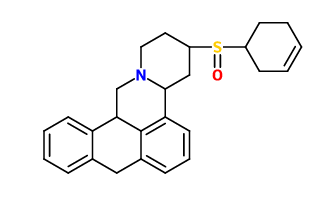I consider the concept of prochirality as a property of an achiral compound (or centre), that can be turned into a chiral compound (or centre) in one step (proprochiral: in two steps) by means of substituting or addition. Hence all carbon centres with three different ligands (substituents or hydrogen) can be considered prochiral.
Prochirality is unfortunately a grown concept, which was used in different ways throughout the years and can be confusing at times. I find the definition in the IUPAC gold book quite enlightening and much better than the Wikipedia page that spawned off of it.
prochirality
Also contains definition of: proprochirality
This term is used in different, sometimes contradictory ways; four are listed below.
- The geometric property of an achiral object (or spatial arrangement of points or atoms) which is capable of becoming chiral in a single desymmetrization step. An achiral molecular entity, or a part of it considered on its own, is thus called prochiral if it can be made chiral by the replacement of an existing atom (or achiral group) by a different one. An achiral object which is capable of becoming chiral in two desymmetrization steps is sometimes described as proprochiral. For example the proprochiral $\ce{CH3CO2H}$ becomes prochiral as $\ce{CH2DCO2H}$ and chiral as $\ce{CHDTCO2H}$.
- The term prochirality also applies to an achiral molecule or entity which contains a trigonal system and which can be made chiral by the addition to the trigonal system of a new atom or achiral group. For example addition of hydrogen to one of the enantiotopic faces of the prochiral ketone $\ce{CH3CH2COCH3}$ gives one of the enantiomers of the chiral alcohol $\ce{CH3CH2CHOHCH3}$; the addition of $\ce{CN−}$ to one of the diastereotopic faces of the chiral aldehyde shown below converts it into one of the diastereoisomers of the cyanohydrin. The two faces of the trigonal system may be described as Re and Si.

- The term prochiral also applies to a tetrahedral atom of an achiral or chiral molecule which is bonded to two stereoheterotopic groups. For example, the prochiral molecule $\ce{CH3CH2OH}$ can be converted into the chiral molecule $\ce{CH3CHDOH}$ by the isotopic replacement of one of the two enantiotopic hydrogen atoms of the methylene group. The carbon atom of the methylene group is called prochiral. The prochiral molecule $\ce{HO2CCH2CHOHCH2CO2H}$ can be converted into a chiral product by esterification of one of the two enantiotopic $\ce{–CH2CO2H}$ groups. The carbon atom of the $\ce{CHOH}$ group is called prochiral. The chiral molecule $\ce{CH3CHOHCH2CH3}$ can be converted into one of the diastereoisomers of $\ce{CH3CHOHCHDCH3}$ by the isotopic replacement of one of the two diastereotopic hydrogen atoms of the methylene group. The carbon atom of the methylene group is called prochiral. The stereoheterotopic groups in these cases may be described as pro-R or pro-S. Reference to the two stereoheterotopic groups themselves as prochiral, although common, is strongly discouraged.
See: chirality centre
- The term prochirality is also applied to the enantiotopic faces of a trigonal system.
The first definition applies especially to tetrahedral carbon atoms.
You can also work off of another definition which might be a bit easier to comprehend.
prochirality centre
An atom of a molecule which becomes a chirality centre by replacing one of the two stereoheterotopic ligands attached to it by a different ligand, e.g. C-1 of ethanol; C-3 of butan-2-ol.
stereoheterotopic
Either enantiotopic or diastereotopic. (In contrast the term constitutionally heterotopic has been used to describe identical groups located in constitutionally non-equivalent positions).
As a rule of thumb you can always substitute a $\ce{-CH2\bond{-}}$ group with a $\ce{-CHD-}$ group and ask your self if it is a chiral centre now.
I personally find it easier to identify stereoheterotopic ligands as this is also important for spectroscopy (esp. NMR).
This is somewhat also mirrored in the third definition.
The second (and fourth) definition applies to doubly bonded carbon atoms especially. If there are three different ligands, then you can assign a Re- and Si-face of that centre. Hence I would also consider these carbons prochiral.
In your case that means that all carbons (except for the ones that are already chiral) are prochiral.
- Marked in pink are all chiral elements (the chirality of the nitrogen depends on the inversion barrier).
- Marked in dark blue are all carbon centres who contain diastereotopic protons and hence can be considered prochiral according to the first definition. This is also evident from the $\ce{^1H-NMR}$ estimation of ChemDraw.
- Marked in green are all carbon centres where you can add a nucleophile to create a stereo centre and are hence prochiral according to definition two.
- Marked in orange are all carbons who are part of an aromatic system. Strictly speaking they are also trigonal carbons and technically you can assign a Re/Si to them. Accordingly they fall within the second definition and can be considered prochiral centres.




